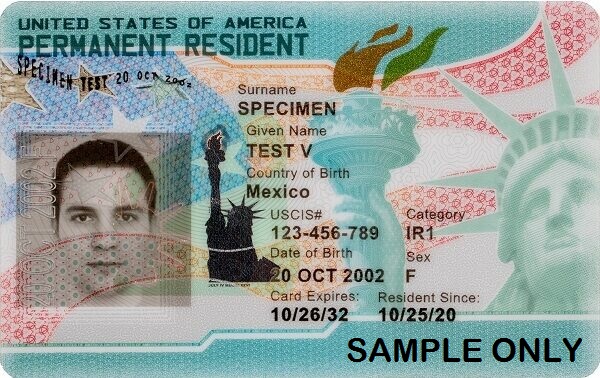CR1 & IR1 Spouse Visas
Let Assess Your Profile
Get discovered by 8,000+ employers & apply to jobs in a single click Get Assess Your Profile For Citizenship In Australia, Canada & New Zealand.
CR1 and IR1 Spouse Visas, Explained
An overview of the CR1/IR1 Spousal Visa Process, including Timeline, Cost, Requirements and More

What Are Spousal Visas?
A CR1 spouse visa (also called IR1) is a green card that allows someone from another country to live in the U.S. with their spouse, a U.S. citizen or permanent resident. If you’ve been married for less than two years, you might get a CR-1 visa (conditional resident), and if you’ve been married for two years or more, you might get an IR1 visa (immediate relative). The latest wait time for a spousal visa is approximately 9-11 months; however, it’s much longer for foreign nationals married to green card holders in the U.S. The CR-1 visa is now considered the common alternative to the K-3 visa.
Wimpacs offers comprehensive spouse visa support and guaranteed approval for one flat fee.
.
CR1 Visa Processing Time 2024
The current wait time for a spousal visa averages about 9-11 months, although this will vary depending on whether you are married to a U.S. citizen or green card holder.
The processing time for I-130 will also vary greatly depending on the service center. The average processing time for Form I-130 is around 11 months. This estimate is based on analysis by Boundless partner Track My Visa Now, who tracks wait times in real time, giving the most up-to-date estimates for Form I-130 petitions filed today.
If you’re not married to a U.S. citizen, you may have to wait a while before a visa becomes available. You can check the Visa Bulletin to get a sense of wait times.
Important Update for Spouses of Green Card Holders (Nov 2023):
The Visa Bulletin shows that it’s taking much longer for F2A applications to get approved. These are for spouses and kids under 21 of U.S. green card holders. So, if a green card holder wants to bring their spouse or child to the U.S., their application could take many years to be processed.
Before August, if a green card holder applied in 2020, they’d get a decision around now. But from August, someone in the same situation would have had to apply in 2017 to get a decision this month.
This means some green card holders might have to wait more than seven years or longer to be with their families.
CR1 / IR1 Requirements
To qualify for a CR1/IR1 visa, you must apply via “consular processing.” Here are the visa types that use consular processing:
- CR1/IR1 spouse and the accompanying CR2/IR2 child when the sponsor is a U.S. citizen
- F2A category (F21 spouse; F22 child) when the sponsor is a legal permanent resident (aka green card holder)
A CR1/IR1 visa allows a U.S. citizen or legal permanent resident (green card holder) to sponsor their foreign spouse to come to the United States.
Specific requirements include:
- The sponsor must be a U.S. citizen or legal permanent resident.
- The couple must be lawfully married and provide a valid marriage certificate.
- The authenticity of the marriage must be proven with evidence, for example, with photographs, flight itineraries, and so on. For more information, see this Boundless guide on proving your marriage is real.
- The sponsor must pledge to support their spouse and file an affidavit of support financially. They must have the means to support their household at 125% of the federal poverty level. If the sponsor doesn’t meet the income requirements, they can use a joint sponsor.
- The sponsor must have a U.S. domicile, meaning they must either live in the United States or prove they plan to return to the United States with their foreign spouse. See our Boundless guide on proving domicile.
What is the CR-1 Visa?
CR1 (or Conditional Resident) visas are given to applicants who, when arriving in the United States with their green card, have been married to a U.S. citizen for less than two years. These visas are granted on a “conditional” basis. Two years after they arrive in the United States, the beneficiary and their U.S. citizen spouse must apply to remove the conditions from the green card, at which point they will receive an updated 10-year permanent resident card.
What is the IR-1 Visa?
On the other hand, IR1 (or Immediate Relative) visas are given to beneficiaries who have been married to U.S. citizens for more than two years when their green card is approved. In this case, the IR1 holder doesn’t need to remove conditions (as there are none) and will have ten years before they need to renew their permanent resident card.
Note:
Investor visas, such as the EB5, are also considered Conditional Resident visas and thus will need to be updated after two years. That being said, for our purposes, the term CR1 generally refers to a conditional, 2-year, marriage-based green card.
Avoid common pitfalls in the immigration process with unlimited support from Wimpacs’ team of immigration experts. Our service includes a final lawyer review, with guaranteed accuracy, so you can apply with confidence. Learn more.
Differences Between the CR1 and IR1
While CR1 and IR1 visas provide similar rights and privileges to beneficiaries, they follow different timelines. The CR1 is a conditional marriage green card, valid for 2 years, while an IR1 is a permanent marriage green card, valid for 10 years.
CR1 Visa
- CR1 visas are for spouses married to a U.S. citizen for less than two years.
- CR1 visas are also known as “conditional resident” visas because the spouse must live in the United States for two years after entering the country before their permanent residency status is fully granted.
- If the spouse and U.S. citizen divorce within the two-year conditional period, the spouse will lose their green card status.
IR1 Visa
- IR1 visas are for spouses married to a U.S. citizen for two years or more.
- IR1 visas are also known as “immediate relative” visas because the spouse can apply for permanent residency immediately after entering the United States.
- There is no two-year conditional period for IR1 visa holders.
CR1 / IR1 Costs
Whether you’re applying for an IR1 or a CR1, the cost for obtaining a marriage-based green card can be broken down into 4 basic categories:
| Filing Form I-130 | $535 |
| Processing the Immigrant Visa Application (DS-260) | $325 |
| Immigrant Medical Exam | This fee will vary depending on the country. The Embassy in Buenos Aires, for example, currently charges $5000 Pesos (about $48 USD) for the required physical examination. The Hanoi Embassy, by contrast, charges $275 for applicants over 15. |
| Paying Related Costs | You will have to cover costs for acquiring all the related documents and paperwork, including translations, passports, birth certificates, photocopying charges, and associated travel expenses. |
For those with a CR1 Visa:
When the time comes to apply for the removal of conditions, you will eventually need to pay a $595 filing fee (for Form I-751) and an $85 biometrics fee.
It’s generally a good idea to collect a list of all the anticipated expenses ahead of time. This will help ensure that you have the money on hand when you need it.
Wimpacs helps you pay government fees over time, so you can get started now and pay later. Guaranteed approval or your money back. Learn more about what Boundless can do to help.
The CR1 / IR1 Application Process
How to Apply for a CR1 or IR1 Visa
To apply for a CR1 or IR1 visa, you’ll need to go through consular processing, which means you’ll need to apply and interview at your local U.S. Embassy or Consulate. In this section, we’ll provide a step-by-step summary of the CR1/IR1 visa application process. For a more detailed explanation, see our Guide to Consular Processing.
Follow the steps below to apply for a CR1 or IR1 visa using consular processing:
Make sure you’re actually eligible to receive a green card. Most importantly, you’ll need to be able to show that you’re in an authentic marriage. Your spouse also should be 18 years or older and “domiciled” in the United States.
The U.S. citizen sponsor — your spouse — will need to complete and file Form I-130 (officially called the “Petition for Alien Relative”).
You’ll then need to wait anywhere from a couple of months to over a year for U.S. Citizenship and Immigration Services (USCIS) to process the form. If I-130 is approved, you can proceed to the next step.
If approved, you can check the Visa Bulletin to see whether a green card is available. You can skip this step if you’re married to a U.S. citizen, but otherwise, you may need to wait in “line.” This can take a long time, depending on where you live.
Your petition will then be processed by the U.S. Department of State’s National Visa Center (NVC), where your case will be formally entered into the system.
The NVC will notify you about any necessary fees and paperwork to be submitted as part of the application process. They will also instruct you to complete Form DS-260 (officially called the “Application for Immigrant Visa and Alien Registration”) — this is the actual green card application, where you will answer questions about yourself, including your work and education history.
After receiving your paperwork from the NVC, your local U.S. Embassy or Consulate should send you a letter telling you when and where the interview will be conducted.
You’ll need to get a medical exam with an Embassy-approved physician before attending your interview. You can check the Embassy’s website to find a list of acceptable doctors.
You’ll need to have all the relevant documentation and your passport when you arrive at your interview. You can contact the Embassy to get a precise list of what you’ll need. You will be expected to answer questions — under oath — about your application.
If no further inquiries are required, you can expect to hear back either immediately or within about a week of your interview. If approved, you should receive a visa — placed inside your passport — and a sealed envelope with your documents. Do not unseal this envelope. The immigration officer at the border should be the only one who opens it.
The visa provided by the consular officer will remain valid for 6 months following your medical exam. Once the U.S. border official admits you into the United States — and returns your documents — your visa will be valid for 12 months, allowing you to travel freely in and out of the country. You can expect to receive your final green card during that 12-month period.
Note:
CR1 and IR1 visas are acquired via consular processing. If you currently reside in the United States, you’ll need to go through the Adjustment of Status (AOS) process, which has its own set of requirements and paperwork.
Avoid common pitfalls in the immigration process with unlimited support from Wimpacs’ team of immigration experts. Our service includes a final lawyer review, with guaranteed accuracy, so you can apply with confidence. Learn more.
Next Steps
Once you’ve successfully completed the green card application process, you may receive either a CR1 or IR1 visa, depending on how long you’ve been married at the time of your admission into the United States.
Note:
CR1 and IR1 visas are acquired via consular processing. If you currently reside in the United States, you’ll need to go through the Adjustment of Status (AOS) process, which has its own set of requirements and paperwork.
Boundless FAQ: Can you work on a CR-1 ?
Yes! You can work on a CR1 Visa! Once you enter the United States with a CR1 visa, you are automatically eligible to work in the United States. You do not need to apply for a work permit. Your stamped passport will serve as a temporary green card until until your green card arrives, typically within 2-3 months.
Marriage green card denial rate
In FY 2022, USCIS received 873,073 applications for Form I-130 (the first step in any family-based green card application, including the marriage green card) and denied 133,251 (15%).
During that same year, USCIS also received 327,184 Form I-485 applications (application to adjust status for foreign spouses or relatives already living in the U.S.) and denied 40,201 (12%).
Note these numbers apply to all immediate relatives of U.S. citizens and green card holder and not only spouses.
For more info, check out the Boundless guide on common reasons for green card denial.
If you have an IR1 visa, you’ll simply need to renew your green card 10 years after receiving it. But if you’ve been issued a CR1 visa, you’ll need to apply to remove the conditions from your green card within 90 days of the 2-year anniversary of your arrival in the United States.
Below, we’ll briefly discuss the process for removing conditions from a permanent resident card. For more detailed instructions, see our guide to removal of conditions.
To begin with, both spouses will need to complete and submit Form I-751 (officially called the “Petition to Remove Conditions on Residence”). It’s very important that you submit your application within the 90-day period leading up to the expiration date of the CR1 green card. If submitted too early, USCIS will simply return the form, and if submitted too late (without explanation), your application could be denied altogether.
As part of the application, you will need to submit proof that you are in an authentic marriage. USCIS will want to see evidence — similar to the kind used for the initial green card application — that your marriage has continued for the past two years. Evidence might include:
- Statements from a joint bank account
- Birth certificates for any children born during the 2-year period
- Property deeds with both names listed
- Photos from the period in question
In addition to paying the appropriate fees (see the “Cost” section for a breakdown), you’ll need to provide a copy of your Conditional Residence green card (both front and back).
Wimpacs stays on top of all government deadlines and news so you don’t have to, we’ll be your immigration partner from beginning to end. Learn more about what Wimpacs can do to help.
Frequently Asked Questions about Spousal Visas
What does CR1 Visa mean?
Yes, same-sex couples have the same rights as opposite-sex couples when it comes to marriage-based immigration. Thanks to the Supreme Court’s decision in Windsor v. United States, the Defense of Marriage Act (DOMA) was deemed unconstitutional. As a result, all marriage-based visa applications are to be assessed in exactly the same way, regardless of sexual orientation. For more information, Boundless put together a detailed immigration guide for LGBTQ couples and families.
If I am in a same sex marriage can I still obtain a CR1/IR1 Spouse Visa?
No, not technically. They need to meet the “domicile” requirement, which is possible even if they live abroad. The easiest way to meet this requirement is to live in the United States or one of its territories. Failing that, they can provide documentation showing one of the following:
- They are an employee at an approved organization
- They are living outside the United States on a temporary basis
- They intend to move back to the United States as soon as you (their spouse) are admitted into the United States
Does my spousal visa sponsor need to reside in the United States?
No, not technically. They need to meet the “domicile” requirement, which is possible even if they live abroad. The easiest way to meet this requirement is to live in the United States or one of its territories. Failing that, they can provide documentation showing one of the following:
- They are an employee at an approved organization
- They are living outside the United States on a temporary basis
- They intend to move back to the United States as soon as you (their spouse) are admitted into the United States
What my spouse visa a Lawful Permanent Resident (LPR) when they initially submitted Form I-130 but have since become a US Citizen?
In this case, they will need to upgrade their petition by submitting the following evidence to the NVC:
- Copy of certificate of naturalization
- Copy of U.S. passport (the biodata page)
What documents will need to get a CR1 or IR1 Visa?
The answer to this question will vary depending on the country where you’re applying, but in general you will need:
- A passport that will remain valid for 6 months after your arrival in the United States
- An Affidavit of Support (Form I-864)
- Form DS-260
- Two 2×2, passport-style photos
- All civil documents requested by the embassy. This will likely include your birth certificate, marriage certificates, police certificates, and military records (if any)
- Medical exam papers
What to expect in CR1 Visa interview?
The goal of the CR1 interview is for the interviewing officer to determine whether or not your marriage is authentic. You will be asked questions about your relationship, including how you met, your daily life as a couple, and your future plans. Wimpacs has put together a detailed guide on what to expect during the marriage green card interview.
How long does a spousal visa take?
The current wait time for the CR1 visa is 13.5–15 months if you’re married to a U.S. citizen and 33–37 months if you’re married to a green card holder.
How long is the CR1 Visa valid for?
The CR1 is a temporary green card that is valid for two years. After two years, the couple will need to apply to “remove the conditions” and obtain a permanent green card.
Which is better: K-1 or CR1?
The K-1 fiancé visa is currently taking slightly longer to process than the CR-1 spousal visa. The K-1 will also cost significantly more when the government raises fees in late 2023. But choosing between these two visa paths depends on your unique situation. Wimpacs has put together an in-depth guide on the pros and cons of the K-1 vs. CR-1 visas.
Can you work with a CR1 Visa?
Yes, the CR-1 visa allows you to start working as soon as you enter the United States. You do not need to apply for a separate work permit when you have a CR-1 visa.
Can I travel with a CR1 Green Card?
Yes, you can travel outside the U.S. as a green card holder, but your trip cannot be longer than one year. For more info, check out the Wimpacs guide on traveling outside the U.S. as a green card holder.
When can a CR1 Holder apply for citizenship?
A CR-1 visa holder may apply for citizenship after 3 years of living with their spouse in the U.S. You are permitted to apply for citizenship 90 calendar days before the 3-year requirement.
Does the CR1 expre?
The CR1 visa is valid for two years, after which time the visa holder must apply to “remove the conditions” on the marriage green card to make it permanent and valid for 10 years. After the 10-year period you can apply to renew it.
What is the minimum income requirement for the CR1 Visa?
The minimum income requirement for most sponsors is 125% of the Federal Poverty Guidelines based on the size of their household and where they live. For a married couple who lives in the 48 contiguous states (mainland U.S.) and has no children, the minimum annual income requirement is $25,550.
How do I get a Social Security card once I successfully secure a CR1/IR1 spousal visa?
When completing the online immigrant visa application, you can opt to receive a Social Security card after your arrival in the United States. This will provide your Social Security Number. In this case, you would most likely receive the card within 6 weeks of your admission into the country. If, for whatever reason, you haven’t elected to receive a Social Security card, you will have to apply for one with the Social Security Administration.
Why would a CR1 visa be denied?
A CR-1 visa may be denied if the applicant is deemed ineligible, if the application is incomplete or inaccurate, if there are security concerns, or if the applicant has a history of immigration violations or criminal activity.
Do I need an Immigration Lawyer for a spouse visa?
It is not required to enlist an immigration lawyer’s help when applying for spouse visa, but certain couples may benefit from a lawyer’s expertise during the process. An immigration lawyer can also add additional peace of mind when navigating the spouse visa application. Learn more about whether or not you need an immigration lawyer for your specific case in Wimpacs’ guide. NOTE: Wimpacs also offers two different services options for the spouse visa application: Essential (a guided application) and Premium (which includes additional lawyer support), so you can apply with confidence no matter what you choose.
What is the CR1 Visa processing time in 2024?
The 2023 processing time for the CR1 visa is 13.5–15 months if you’re married to a U.S. citizen and 33–37 months if you’re married to a green card holder.
1 /
1
Wimpacs Reviews

★★★★★
twitter@john_p Read More
I had availed Immigration Consultancy Survives of Wimpacs.com 6 months ago for US Employment & successfully I had got Employment Residency.

★★★★★
facebook@ramesh Read More
Wimpacs Immigration Services is one of the the best reliable platform in India. The services as well as price are very nominal. Really I appreciate It.

★★★★★
instagram@jessica Read More
3 Month ago I had applied for US citizenship through Wimpacs.com & was asked 6 month time. But I had got Visa within 4 month. Wimpacs really good.

★★★★★
facebook@rajendra Read More
I was leaving in New York and looking for US based Employment via US Spouse. I had applied for US citizenship through Wimpacs supports & guidelines.

★★★★★
facebook@sunita Read More
I went to Alaska for visti of my father during visit I had applied for citizenship with the help of Wimpacs.com 7 within 6 month I got Residency.

★★★★★
facebook@mohan Read More
Few month ago I had got Business Visa for US via Wimpacs consultation services. Really Wimpacs works expedite for every visa for US UK, Australia+Newzealand.

